Обновлено: 31.03.2023
- Для учеников 1-11 классов и дошкольников
- Бесплатные сертификаты учителям и участникам
Television in Our Life – Телевидение в нашей жизни
History of television
The first attempts to get an image on the screen were made in the late XIX century. But the large-scale production of the first televisions did not start until 1930s. Soon, with the development of science and technologies, television became an essential part of our life.
Television variety
Today, it is hard not to get lost in this diverse TV world. Thus, there is high definition television, which is characterized by images and sound of high quality. There is also smart-TV – television with integrated Internet. There is also 3D-television, which can only be watched with the help of special goggles.
Television for everyone
Television is one of the mass media with the largest audience of all.
Due to its accessibility everyone can watch television despite their age and social status. Some people get an update on the latest news; others watch soap operas and talk-shows.
However, television does not exist for information and entertainment only. It can also be educational. That is why students and little children may find it useful as well.
Television in our life
Television came to our life about 100 years ago, but nowadays there is hardly a household without a TV set. Despite the development of other sources of information, TV still remains one of the most important ones.
История создания
Первые попытки получить изображение на экране были предприняты в конце XIX века. Но массовое производство первых телевизоров началось только в 1930-х годах. Вскоре, благодаря развитию науки и техники, телевидение стало неотъемлемой частью нашей жизни.
Такое разное телевидение
Сегодня легко запутаться во всем многообразии телевизоров. Так, телевидение повышенной четкости отличает высокое качество изображения и звука. Смарт-ТВ – это телевидение, объединенное с Интернетом. Есть телевизоры с трехмерным изображением, которое можно разглядеть через специальные очки.
Телевидение для всех
Телевидение является одним из средств массовой информации с самой обширной аудиторией.
Однако, телевидение – это не только источник информации и развлечений. Оно также несет в себе образовательную функцию. Таким образом, оно может быть полезно студентам и маленьким детям.
Телевидение в нашей жизни
Телевидение появилось в нашей жизни около 100 лет назад, но сегодня трудно найти семью, в которой не было бы телевизора. Несмотря на развитие других источников информации, телевидение по-прежнему остается одним из самых важных.
Если у вас возникли сложности с курсовой, контрольной, дипломной, рефератом, отчетом по практике, научно-исследовательской и любой другой работой — мы готовы помочь.
History Of Television Essay, Research Paper
The History Of Television
Few inventions have had as much effect on contemporary American society as television. Before 1947 the number of U.S. homes with television sets could be measured in the thousands. By the late 1990s, 98 percent of U.S. homes had at least one television set, and those sets were on for an average of more than seven hours a day. The typical American spends from two-and-a-half to almost five hours a day watching television. It is significant not only that this time is being spent with television but that it is not being spent engaging in other activities, such as reading or going out or socializing.
The first actually television success was in San Francisco, California on September 7, 1927. Philo Taylor Fansworth a 21-year-old inventor who lived in a house without electricity till he was 14 designed this system. When Farnsworth was still in high school he developed a system that could capture moving images then convert them to radio waves and then transformed into a picture on a screen.
The first successful television transmissions occurred between 1928 and 1935. Because the pictures in this system were composed of only 30 lines, small details could not be reproduced. This system was known as a low definition system. Several hundred lines are needed to give definition comparable to 35 mm film.
The BBC introduced the first high definition system in 1936. This system consisted of 405 lines. In 1964, they introduced a second high definition set. This was a 625-line system that was better suited to many other broadcasting authorities, so it enabled an even higher picture resolution than before.
Rca, the company who owned the two dominating radio networks invested $50 million dollars in the development of electronic television. In 1939 RCA televised the opening of the New York World Fair. Durring that opening ceremony president Franklin D Roosevelt made a speech, making him the first president to appear on television. Later that year RCA purchased a license to use Farnsworth s television patents. RCA began selling the first televisions, these television sets were 5 inches by 12 inches. RCA also began broadcasting regular programs. By 1941 the Columbia Broadcasting System (CBS) began broadcasting two 15 minute newscasts a day to a tiny audience on its New York televison station.
Between 1953 and 1955, television programming began to take some steps away from radio formats. At this time there were currently 3 televisons networks. The third network, ABC, turned its first profit with youth-oriented shows such as Disneyland, which debuted in 1954.
In 1964 color broadcasting began on prime-time television. The FCC initially approved a CBS color system, and then swung in RCA’s favor after they swamped the marketplace with black-and-white television sets compatible with RCA color (the CBS color system was not compatible with black-and-white sets and would have required the purchase of a new set). During the 1960s and 1970s the US increasingly fascinated with television was limited to watching almost exclusively what appeared on the three major networks: CBS, NBC, and ABC. These networks purchased time to broadcast their programs from about 200 affiliates in each of the major cities or metropolitan areas of the United States. In the larger cities, there were also a few independent stations, mostly playing reruns of old network shows.
In 1967 A Carnegie Commission recommended the creation of a fourth, noncommercial, public television network built around the educational nonprofit stations already in operation throughout the United States. Congress created the Public Broadcasting System that year.
The first available cable was broadcasted in the New York area. By 1071 more then 80,000 subscribers in New York alone, had subscribed to cable.
The television has become one of the greatest inventions ever made. Allowing users to get away from reality and go into a little world that could bring endless possibilities to the imagination.
Today every family has a TV-set at home. Sometime we have even 2-3 TV-sets. People become so much dependent on television.
Well television came to our life in 1934 and it was invented in the USA. The very first Electronic Television was Invented in 1927. The world’s first electronic television was created by a 21 year old inventor named Philo Taylor Farnsworth. That inventor lived in a house without electricity until he was 14. Many people from all the world were working on this invention in past. Someone gave only ideas, somebody made few details, later on these details were connected. I want to say people were doing their best to make our life more interesting and enjoyable.
Today on TV you can watch so many programs. There are 1000 different channels for children, teenagers, adults and even old people. You can watch movies, episodes, news, shows, cartoons 24/7.
There are many useful and useless programs on TV. Actually when I want to watch something interesting I plan this in advance. I check the program in internet or in the newspaper. There is too many advertisements. New detergent, pampers, best coffee or chocolate, trips all around the world and many other things. But I don’t trust them. This is how they make money.
There are many bad programs on TV. I mean programs that are wasting our time. All the shows you can know “Dom 2”, “Borodina and Buzova” can be very interesting for someone. But I think there is nothing useful there.
Everybody has to think how to spend time. TV can tell us many interesting facts about news in the world, it can entertain our children and show us really good programs. It’s important to choose and understand how exactly you want to spend your time.
Телевидение
Сегодня каждая семья имеет дома телевизор. А порой даже 2-3 телевизора в доме. Люди становятся очень зависимыми от ТВ.
Что же телевидение пришло в нашу жизнь в 1934 году и впервые появилось в США. Первый электронный телевизор был изобретён в 1927 году. И самый первый электронный телевизор в мире был создан юным Фило Тейлором Фарнсвортом. Парню был всего 21 год. Кстати, сам изобретатель жил в доме без электричества до 14 лет. Многие люди со всего мира работали над этим изобретением в прошлом. У кого-то рождались идеи, кто-то создавал детали, а позже эти детали соединялись между собой. Я хочу сказать, что люди очень старались внести свою лепту, чтобы сделать нашу жизнь интересной и развлекательной.
Есть много полезных и бесполезных программ по ТВ. Вообще, когда я хочу посмотреть что-то интересное, я планирую это заранее. Я проверяю расписание в интернете или в газете. Но по телевизору показывают так много рекламы: новый порошок, памперсы, лучший кофе и шоколад, поездки по всему миру и многое другое. Но я им не доверяю. С помощью реклам просто зарабатывают деньги.
Полиглот. Английский язык запись закреплена
Television variety
Today, it is hard not to get lost in this diverse TV world. Thus, there is high definition television, which is characterized by images and sound of high quality. There is also smart-TV – television with integrated Internet. There is also 3D-television, which can only be watched with the help of special goggles.
Television for everyone
Television is one of the mass media with the largest audience of all.
Due to its accessibility everyone can watch television despite their age and social status. Some people get an update on the latest news; others watch soap operas and talk-shows.
However, television does not exist for information and entertainment only. It can also be educational. That is why students and little children may find it useful as well.
Television in our life
Television came to our life about 100 years ago, but nowadays there is hardly a household without a TV set. Despite the development of other sources of information, TV still remains one of the most important ones.
История создания
Первые попытки получить изображение на экране были предприняты в конце XIX века. Но массовое производство первых телевизоров началось только в 1930-х годах. Вскоре, благодаря развитию науки и техники, телевидение стало неотъемлемой частью нашей жизни.
Такое разное телевидение
Сегодня легко запутаться во всем многообразии телевизоров. Так, телевидение повышенной четкости отличает высокое качество изображения и звука. Смарт-ТВ – это телевидение, объединенное с Интернетом. Есть телевизоры с трехмерным изображением, которое можно разглядеть через специальные очки.
Телевидение для всех
Телевидение является одним из средств массовой информации с самой обширной аудиторией.
Однако, телевидение – это не только источник информации и развлечений. Оно также несет в себе образовательную функцию. Таким образом, оно может быть полезно студентам и маленьким детям.
Телевидение в нашей жизни
Телевидение появилось в нашей жизни около 100 лет назад, но сегодня трудно найти семью, в которой не было бы телевизора. Несмотря на развитие других источников информации, телевидение по-прежнему остается одним из самых важных.
Читайте также:
- Живут ли герои чехова среди нас сочинение
- Как я разыграл друга сочинение
- Сочинение на тему дзыгъуэхэм я хейр джэдум зэрищ1ар
- Сочинение китайцев на русском языке
- 1984 итоговое сочинение 2022
Представлено сочинение на английском языке Телевидение/ Television с переводом на русский язык.
| Television | Телевидение |
| Since the times of its appearance television has played a very important role in people’s lives. It’s considered to be one of the most powerful media sources. The first sketches of moving objects in electronic devices were made in 1878, later in the 20-s and 30-s of the XX century the first real television appeared. | Со времен своего появления телевидение играет очень важную роль в жизни людей. Оно считается одним из самых мощных средств массовой информации. Первые наброски движущихся объектов в электронных устройствах были сделаны в 1878 году, позже в 20-х и 30-х годах ХХ века появилось первое реальное телевидение. |
| Television has consequently become a cheap form of entertainment for people worldwide. The first TVs were white and black, and only in 1967 the citizens of our country saw colour television. Nowadays television has progressed and changed a lot for the better. Nearly every family has one or two TVs in their homes, and these TVs differ a lot from the past ones. Contemporary TV sets offer digital television (DTV), high-definition television (HDTV) and other new technologies. There are also hundreds of thematic channels instead of two and three, which were back in the 60-s. | В результате, телевидение, стало дешевой формой развлечения для людей во всем мире. Первые телевизоры были черно-белые, и только в 1967 году граждане нашей страны увидели цветной телевизор. В настоящее время телевидение очень прогрессировало, и сильно изменилось в лучшую сторону. Почти каждая семья имеет один или два телевизора у себя дома, и эти телевизоры сильно отличаются от тех, что были в прошлом. Современные телевизоры предлагают цифровое телевидение (DTV), телевидение высокой четкости (HDTV) и другие новые технологии. Существует также сотни тематических каналов вместо двух и трех, которые были в 60-х годах. |
| Television has lots of advantages, for example, keeps us informed, entertained and in some cases even educated. It can also get the family together in the evenings. However, there are also some disadvantages. It cuts people from the real world. Some people get addicted to it and can’t stop watching. Another disadvantage is the content sometimes shown. First of all, there is so much advertising, that it occupies the majority of television time. Secondly, there is lots of violence and cruelty on TV nowadays. It gets difficult to find something neutral to watch. | Телевидение имеет множество преимуществ, например, держит нас в курсе событий, развлекает и в некоторых случаях даже образовывает. Оно также может сплачивать семьи по вечерам. Тем не менее, есть и некоторые недостатки. Оно отрезает людей от реального мира. Некоторые люди становятся зависимыми от него и не могут прекратить просмотр. Другим недостатком является содержание, которое иногда показывают. Прежде всего, там так много рекламы, что она занимает большую часть телевизионного времени. Во-вторых, на телевидении много насилия и жестокости в настоящее время. Становится все труднее найти нечто нейтральное для просмотра. |
| Nevertheless, television has obviously changed the society, and it’s probably used more than any other type of mass media. | Тем не менее, телевидение заметно изменило общество, и его, вероятно, используют больше, чем любое другое средство массовой информации. |
History of Television: The Most Influential Personalities That Contributed to the Development of Television Technology Essay
Exclusively available on IvyPanda
Available only on IvyPanda
Updated: Feb 16th, 2022
Television has become an imprescriptible part of the daily routine and the most significant electronic media. There is no single state that is not covered by TV-broadcasting. The development of this technology took more than a century. The United Nations General Assembly proclaimed November 21 as the official day of telecasting. The paper discusses the most influential personalities that contributed to the development of television technology.
Giovanni Caselli plays an essential role in the origins of technologies that brought television into existence. In the 1850s, Caselli invented the first pantelegraph – a device that could transmit not only lines, dots and characters, but also small images. In other words, Casellis invention made the conversation of pictures into electronic signals possible. Thus, the working methods of pantelegraph affected the further development of television.
The most important events in the sphere of broadcasting happened in 1925 when John Baird, the Scottish engineer, for the first time, demonstrated the working television. The transmitted image was a monochrome mannequins head called Stooky Bill. Three years later, Baird managed to show an unprecedented color transmission. The world community became aware of televisions ability to demonstrate colors due to the inventions of Baird.
Television became a profitable business, and the period after World War II was marked by the production of radio and TV equipment for consumer use. This process was the most apparent in the US, where per families possession of domestic television sets was rapidly growing. From 1947 to 1953, the number of TVs there increased in 450 times (Geiger, 2019). The mass production of televisions affected society because since those times TV is a must-have.
One of the first personalities of TV that influenced popular culture is Charlie Chaplin, an English comic actor and filmmaker. In spite of the fact he was performing in the age of black and white, silent cinematograph, he managed to popularize this entertainment among people. Consequently, he made people like and value movies, which led to the subsequent development of the film industry and television.
In conclusion, it is crucial to notice that substantially more people than it was described in the paper contributed to the development of television technologies. Still, the mentioned personalities are the most significant ones since they created the foundations of the further elaboration of broadcasting. Modern television is impossible to imagine without the contributions of engineers, inventors, entrepreneurs, and actors of the two previous centuries.
References
Geiger, L. (2019). TV: A Forgotten History. Web.
This essay on History of Television: The Most Influential Personalities That Contributed to the Development of Television Technology was written and submitted by your fellow
student. You are free to use it for research and reference purposes in order to write your own paper; however, you
must cite it accordingly.
Removal Request
If you are the copyright owner of this paper and no longer wish to have your work published on IvyPanda.
Request the removal
Need a custom Essay sample written from scratch by
professional specifically for you?
807 certified writers online
The television, since its original conception, has steadily become a pertinent chunk of the modern world; so much so that a day without it can feel just a little empty for most people. This is arguably why people watch so much of it, often piling onto the couch for up to five hours at a time or dividing their attention between the sound of “The boob tube,” and home chores. In this day and age, television has modified itself so that you don’t even have to physically be in front of it to watch it. With apps such as the Optimum TV app, Optimum online cable customers can now watch television on their Ipods, Iphones, and laptops. Live TV can now be paused to give the viewer time to go get a snack or use the bathroom. You can also rewind it in case you missed anything or want to replay a moment you just saw seconds before. It’s certainly fascinating to see how important a rectangle full of images can become, especially when you look at how it began.
“The television as we see it and know it today was not always this way. Let’s take a brief look at the history of television and how it came into being.” (1)
Timeline of TV History
Different experiments by various inventors and scholars immersed in the fields of electricity and radio, resulted in the development of basic technologies and ideas that later became the groundwork for the invention of television.
During the late 1800s, Paul Gottlieb Nipkow, a student studying in Germany, developed the first ever mechanical module of television. Using a rotating metal disk, Nipkow was able to send images through wires. This was called the ‘electric telescope’ and had 18 lines of resolution.
Sometime around 1907, inventors, A.A. Campbell-Swinton from England and scientist Boris Rosing from Russia, struck the match of innovation when they used the cathode- ray tube in addition to the mechanical scanner system, to create a new cutting-edge television system. Nipkow’s and Rosing’s research and experimentations caused two types of television systems to unfold into existence: mechanical television and electronic television.
Mechanical Television History
In 1923, American inventor, Charles Jenkins experimented with Nipkow’s disk idea to create the first ever practical mechanical television system. Consequently, by 1931, his Radiovisor Model 100 was being sold in a complete kit as a mechanical television. In 1926, just a small while after Jenkins, a British inventor known as John Logie Baird, was the first person to have succeeded in transmitting moving pictures through the same mechanical disk system founded by Nipkow. Baird, in addition, started the first ever TV studio.
From 1926-1931, the mechanical television system saw many improvements, and advancements. Even though the findings of these men in the department of mechanical television were very innovative, by 1934, all television systems had converted into the electronic system, which is what happens to be in existence even today.
Electronic Television History
In 1907, Swinton’s experiments with the cathode ray tube for electronic television held great potential but were not converted into reality. It would not be utilized until 1927, when Philo Taylor Farnsworth was able to invent a working model of the electronic television that was based on Swinton’s ideas.
Philo Taylor Farnsworth’s experiments had started when he was just 14 years old. By age 21, Philo had created the first electronic television system, which steered away from the rotating disks and other mechanical features of mechanical television. Thus the mother of the modern television system was born. All the early television systems were black and white, with color television patiently waiting to be discovered in the future.
Color television is something that we all take for granted today. In fact many films, videos and programs romantically revert back to black and white film making, (some use soft splashes of color to give it that new age feel). Black and white photography has also become stylish and vintage and in-demand in artistic circles. When it was new, this was how they viewed color TV. Once upon a time, owning a color television was thought to be the ultimate status symbol as it was not something that everyone could afford. It matriculated you into the secret club of the Jones’ whom everyone was trying to keep up with.
The first ever recorded mention of a color television system took place in 1904. A patent given in Germany delivers proof to the fact that an idea for a color television was proposed at that particular point in time. But it was only that – an idea.
Zworykin, in 1925 also theorized a color television system, and again, this was not made a reality. It took as long as two decades later, in 1946, when the idea of color television was revealed again. By 1946, the Second World War was a memory being transcribed into history books, and people in America were clamoring to make up for every lost minute that had become a casualty of the war. Black and white television was now ancient and it was time to do something new. This is when color television systems first began to spark serious thought.
In America, the color television became an arms race between two giants in the television industry, CBS and RCA. CBS was the first to develop a color television system that was mechanical. This system was inspired by John Baird’s concepts of color TV. Color television, after years of whispers, was finally a reality, but this first system was incompatible with every black and white television set.
By 1950, the FCC announced the CBS color system as the national standard, and by 1951, CBS had started color broadcasts in the East Coast of the US. Not to be left behind, RCA sued CBS as their system could not be used with the millions of black and white televisions across America, most of which were RCA sets.
The Korean War gave RCA time to develop a better color TV system than CBS. Their system was not mechanical, but electronic and far superior. Finally, by 1953, FCC declared a new standard color television system and color TV sets of RCA were available to the buying public from 1954 onwards.
Even though color sets were finally available, not many people actually went out and bought them as there were not even a handful of color programs being broadcast. It took another decade (1966) for people to start making color programs for broadcast, which eventually made people begin buying color television sets.
TV’s growth throughout its history is as impressive as it was slow. In these fast times when phones can unlock your car door for you and laptops have touch screens that speak and everything non-human is quickly learning how to become better versions of us, a look at television’s slow deliberate growth almost seems like something from the stone age, simple and primitive. It’s refreshing.
Works Cited
http://www.thehistoryoftelevision.com/
History Of Television Essay, Research Paper
The History Of Television
Few inventions have had as much effect on contemporary American
society as television. Before 1947 the number of U.S. homes with
television sets could be measured in the thousands. By the late
1990s, 98 percent of U.S. homes had at least one television set,
and those sets were on for an average of more than seven hours a
day. The typical American spends from two-and-a-half to almost five
hours a day watching television. It is significant not only that
this time is being spent with television but that it is not being
spent engaging in other activities, such as reading or going out or
socializing.
The first actually television success was in San Francisco,
California on September 7, 1927. Philo Taylor Fansworth a
21-year-old inventor who lived in a house without electricity till
he was 14 designed this system. When Farnsworth was still in high
school he developed a system that could capture moving images then
convert them to radio waves and then transformed into a picture on
a screen.
The first successful television transmissions occurred between
1928 and 1935. Because the pictures in this system were composed of
only 30 lines, small details could not be reproduced. This system
was known as a low definition system. Several hundred lines are
needed to give definition comparable to 35 mm film.
The BBC introduced the first high definition system in 1936.
This system consisted of 405 lines. In 1964, they introduced a
second high definition set. This was a 625-line system that was
better suited to many other broadcasting authorities, so it enabled
an even higher picture resolution than before.
Rca, the company who owned the two dominating radio networks
invested $50 million dollars in the development of electronic
television. In 1939 RCA televised the opening of the New York World
Fair. Durring that opening ceremony president Franklin D Roosevelt
made a speech, making him the first president to appear on
television.
Later that year RCA purchased a license to use
Farnsworth s television patents. RCA began selling the first
televisions, these television sets were 5 inches by 12 inches. RCA
also began broadcasting regular programs. By 1941 the Columbia
Broadcasting System (CBS) began broadcasting two 15 minute
newscasts a day to a tiny audience on its New York televison
station.
Between 1953 and 1955, television programming began to take some
steps away from radio formats. At this time there were currently 3
televisons networks. The third network, ABC, turned its first
profit with youth-oriented shows such as Disneyland, which debuted
in 1954.
In 1964 color broadcasting began on prime-time television. The
FCC initially approved a CBS color system, and then swung in RCA’s
favor after they swamped the marketplace with black-and-white
television sets compatible with RCA color (the CBS color system was
not compatible with black-and-white sets and would have required
the purchase of a new set). During the 1960s and 1970s the US
increasingly fascinated with television was limited to watching
almost exclusively what appeared on the three major networks: CBS,
NBC, and ABC. These networks purchased time to broadcast their
programs from about 200 affiliates in each of the major cities or
metropolitan areas of the United States. In the larger cities,
there were also a few independent stations, mostly playing reruns
of old network shows.
In 1967 A Carnegie Commission recommended the creation of a
fourth, noncommercial, public television network built around the
educational nonprofit stations already in operation throughout the
United States. Congress created the Public Broadcasting System that
year.
The first available cable was broadcasted in the New York area.
By 1071 more then 80,000 subscribers in New York alone, had
subscribed to cable.
The television has become one of the greatest inventions ever
made. Allowing users to get away from reality and go into a little
world that could bring endless possibilities to the
imagination.
Понравилась работу? Лайкни ее и оставь свой комментарий!
Для автора это очень важно, это стимулирует его на новое творчество!
At the beginning of the 20th century, it was invented how to show an image and then how to transmit a television program using radio waves. Television production began, let’s see how designers and engineers improved television receivers from the time the television was created to the present day. Let’s see how the evolution of television has taken place. Let’s also take a short look at the history of TVs.
The beginning of the television era, 1920.
When it was thought of how to transmit an image using radio waves. Engineers began inventing prototypes of TVs, then TV production began, and you can see how designers and engineers have perfected TVs from their invention to the present day.
Octagon TV, First TV
In the U.S., television production began in 1928, with a model of mechanical television from General Electric called “Octagon”, the receiver was not popular and was more of a prototype than a household item. The model of mechanical TV set “Octagon”, is an experimental model, it was not sold and was tested only in the laboratory.
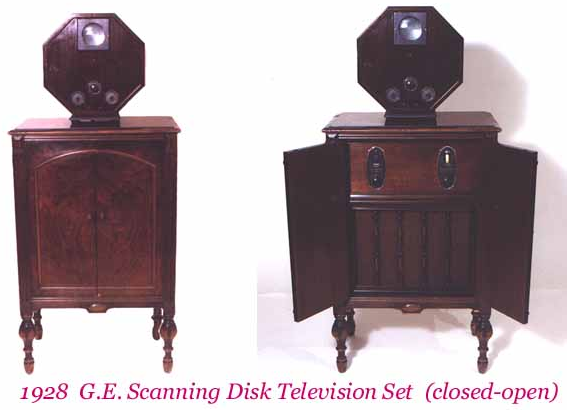
In Britain, a mechanical TV was also developed in 1928 and was called the “Baird Model “C”. This TV was also a prototype, with around 20 TVs produced. In another modification, the TV was produced in 1929, under the name Noah’s Ark.
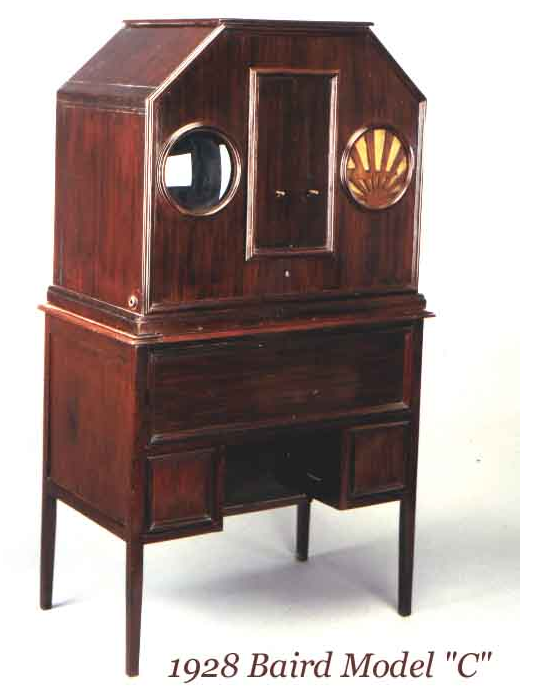
Similar TV sets were made in France in 1929 and the USSR in 1934.
TVs in the 1930s
In the mid-30s of the 20th century, electronic TVs were developed, they had a small screen. Such TV sets were produced in the USA, Great Britain, Germany, France and the USSR.
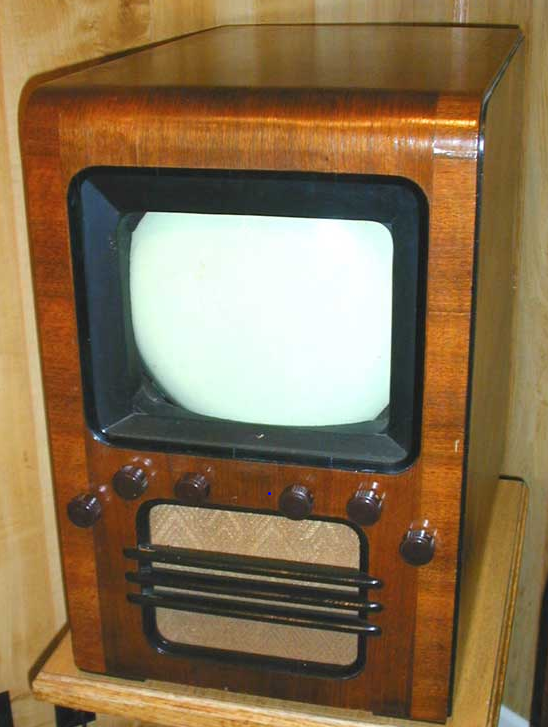
TVs in 1940-1945
1940-1945 during the Second World War, industry switched to the development of military equipment, the development of television receivers was suspended.
After the war, Europe was busy reconstructing destroyed cities and enterprises, so only the USA and Great Britain produced TV sets, and France also produced one model. The TVs became smaller in size.
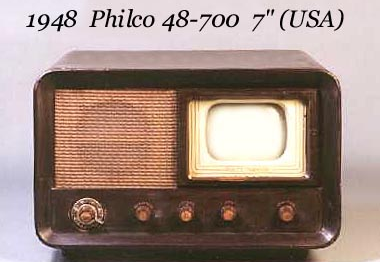
TVs from 1950-1960
1950-1960 TV sets started to be produced with 7-10 inch screens, the principle of color TV signal transmission was developed, in the USA color TV sets started to be produced, TV sets started to be equipped with remote control (TV set was connected with remote control cable). Other countries Brazil, Canada, Czechoslovakia and Italy also started to produce TV sets. Japan also released its first TVs under the Sharp brand.
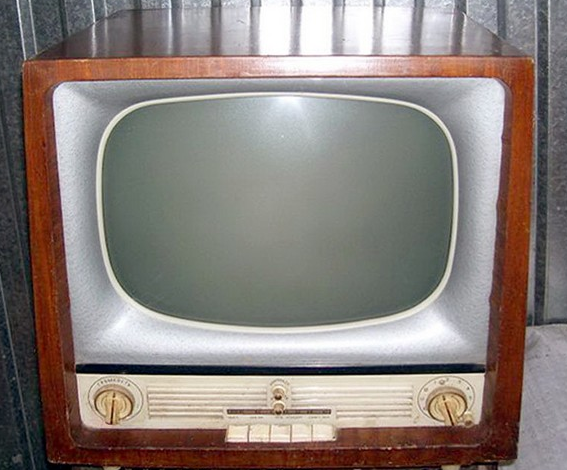
TVs of 1960-1970s
1960-1970 TVs were improved if initially TVs were produced on electronic vacuum lamps, after the invention of semiconductors, TVs were produced using transistors. Screens became large 25 inches.

TVs 1970-1980
1970-1980 during this period there was a gradual phase-out of black and white TV production, the industry switched to the production of color TVs. Manufacturers’ attention was drawn not only to the technical side, but also to the TV design.
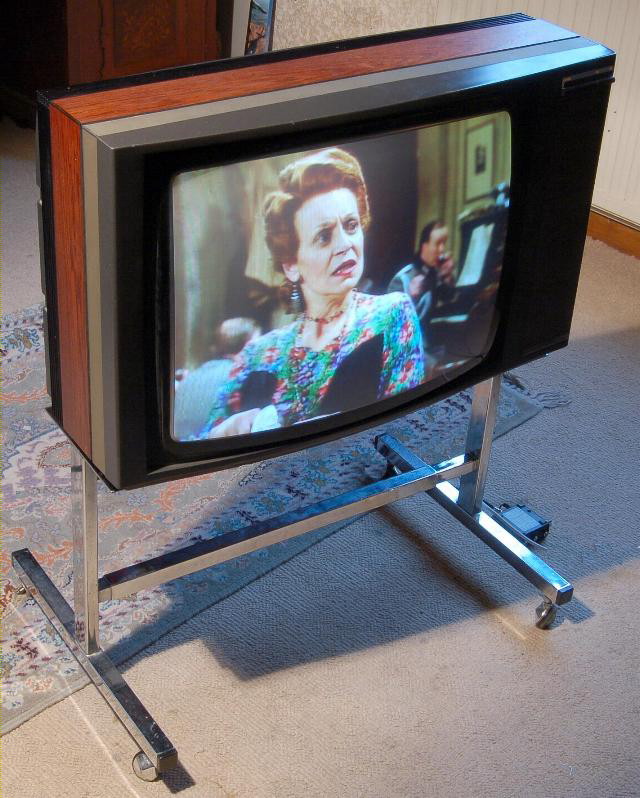
TVs 1980-1990
1980-1990 TV sets did not change much, manufacturers experimented with design, produced portable TV sets, from the technical side there was a transition from semiconductors to chips. TV housings began to be made of plastic.
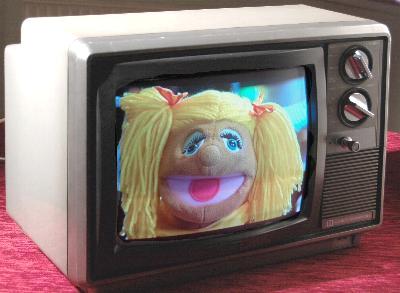
TVs of 1990-2000
1990-2000 the number of TV producers is decreasing, this is influenced by the decrease in consumer demand and saturation of the market with TVs. TV housings are completely beginning to be produced from plastic. Complete control only by remote control, thanks to advanced technology (Slim) electronic ray tubes become shortened, also developed flat kinescopes. Flat televisions made with plasma technology have been developed. In 1992, the Japanese company Fujitsu developed the first color plasma panel with a diagonal of 21 inches (53 cm). Mass production of plasma televisions started in 1995. The development of LCD TVs began. The start of production of LCD TVs slowed down the quality of the panels, namely the high response time, which made them not competitive with plasma.
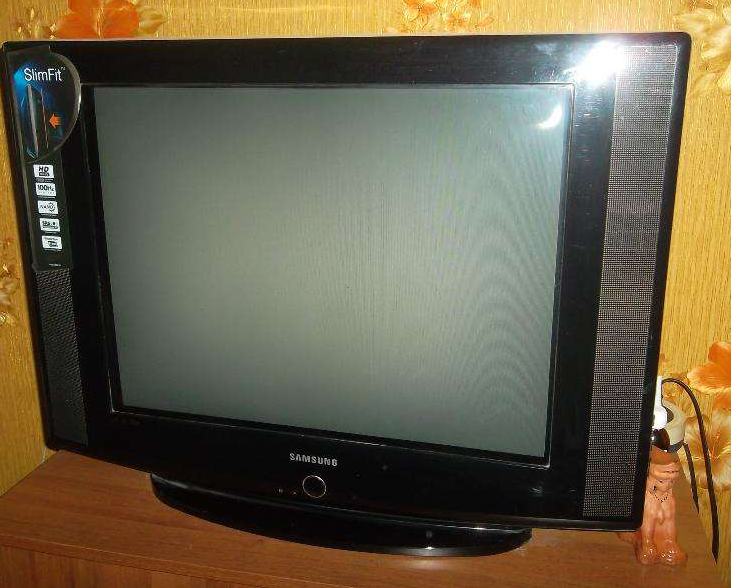
TVs 2000-2010
2000-2010 in the beginning of the 21st century, plasma technology flat-panel TVs were added to the LCD technology. By the end of the decade, the production of kinetoscopic televisions (CRT) was curtailed. TV sets by the leading manufacturers were produced either by LCD or plasma technology. The quality of LCD televisions became commensurate with the picture quality on plasma televisions.
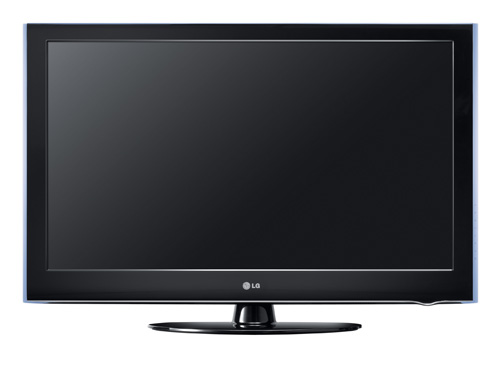
TVs 2010-2020
2010-2020 plasma TV production was discontinued, the last significant manufacturer Panasonic stopped plasma production in 2014. Chinese manufacturers a little later. LED TVs are being developed, and screen backlighting is produced not by lamps but by LEDs. The TVs have become computers that can access the Internet and are integrated into the home computer network. In the middle of the decade, the production of LCD TVs was discontinued and LED backlighting was replaced by lamps. Production of televisions that do not require external OLED backlighting was mastered. In the manufacture of screens began to use new materials, there were LED TVs on quantum dots.
Screen resolution, if in 2010 mainly produced TVs with HD and Full HD screens Tom 2015 more than half of TVs have UHD resolution, by 2019 about 90% of produced TVs have UHD resolution. TV sets with curved huge screens of up to 100 inches are produced.
Experiments with 3D 2012-2016 have seen mass production of TVs with support for volumetric images. But this technology was not in demand by 2017 production of 3D TVs was stopped.
At the end of the decade, 8K resolution TVs were produced. Technical capabilities continue to be improved, HDR support has been implemented (the ability to manage image quality up to a specific frame), but content with HDR metadata is needed.
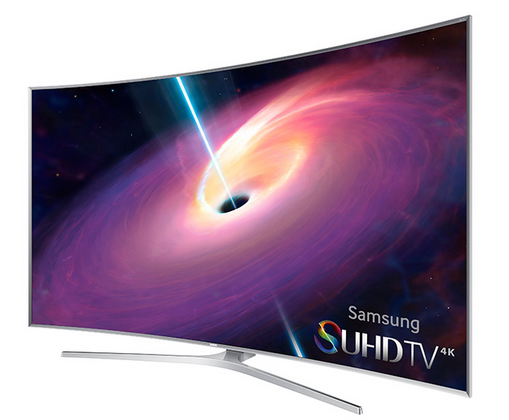
Download file to see previous pages
The word television was coined by a Russian scientist Constantin Perskyi in a paper he presented at the International Electricity Congress at the International World Fair in Paris on August 25, 1900. Even before that, Paul Gottlieb Nipkow, a German student, had patented the first television in 1884. It was a electromechanical device based on the photoconductivity of the element Selenium and Nipkow’s spinning disk with a series of holes of equal diameter drilled into it at equal distances. In the camera unit, as the disk spun in front of the object, each hole produced a scan line which was captured by a light detecting device behind it.
The scan line was transmitted by radio wave to the reproducer or receiving unit. This basic television and other refinements that came after it were however restricted to transmission of still images and silhouettes. It was only on October 2, 1925 that the Scottish scientist John Logie Baird, who took the lead in development of the electromechanical television, achieved live transmission of moving half-tone images in his laboratory. Baird’s endeavour took the electromechanical television through a continuous phase of technical development ranging from the first transatlantic transmission between London and New York by his company in 1928, the first transmission between shore to ship, demonstratin of the first electromechanical colour, infrared and stereoscopic television to the first live transmission, of the Epson Derby in 1931 and demonstration of the ultra short-wave television in 1932.
…Download file to see next pages
Read
More



